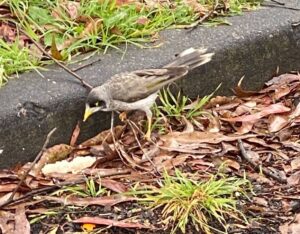If you are keen to help the environment one of the most beneficial things you can do is to grow plants that are indigenous to your local area. These plants have evolved to grow in the soil and climatic conditions in your area and will also provide food for the native animals, birds and insects that frequent your district. They are referred to as indigenous plants.
It is not enough to simply grow native Australian plants in Australian gardens. To make a contribution to the health of the Australian environment it is important to maintain local plant populations. This can be done by deliberately choosing plants from the local area.
Even school kids can have a big impact on their local bushland and its restoration by collecting and propagating indigenous plants.
You can grow indigenous plants in your home garden or at school. You can also encourage your council and other authorities to plant indigenous plants.
Indeed, many local councils already offer indigenous plants to residents and some have policies in place to plant indigenous native plants.
Indigenous
The word indigenous is used to describe something that is found only in a certain locality. Indigenous plants can be very specific to any one area or may be found over wider areas. Populations may be different even in adjacent localities but not different enough for botanists to class them as different species.
When looking for indigenous plants it is important to distinguish between plants that have become naturalised and were originally introduced from other regions (these naturalised plants can be weeds in a local environment), and those which have always grown in the specific area.
Finding local plants
One of the best ways to ensure that the plants you are growing are indigenous is to gather seed from native plants growing naturally nearby. While it is not permitted to gather seeds in national parks there will be other remnant areas where native plant seed will be found.
One important area to collect from is any new housing estate that is being established in your area. New housing estates are often built over land with populations of native plants. By saving seed from your block and by reserving the top soil and reusing it in your garden when building work is completed, you will be preserving your local genetic material.
Seed collecting
Look for seed pods in areas of remnant bushland. The seeds will often be found in what appears to look like lumps on plants. These ‘lumps’ may be gum nuts, cones or other seed containers.
Remove the branch that carries some seeds by cutting it off neatly with secateurs or a high branch lopper.
Allow the seed pods to dry and burst open. Gum nuts for example can be placed on white paper or sheeting that will capture the fine sandlike seed. Callistemons too have fine seed. Other plants such as hakeas, kurrajongs and Illawarra flame trees have larger seeds that are easier to handle.
If the seed is small and fine, scatter it over the surface of a container filled with seed raising or propagating mix. Cover it if desired with a fine layer of sand and moisten the mix. Press larger seeds into the top of the mix and lightly cover. Moisten. Seed will soon germinate and young plants will appear. These can be transferred to single pots when they are large enough to handle.
Hint: Milk cartons make good containers for raising trees such as gum trees.
Further reading
For more on plant propagation consult:
Yates Garden Guide (Angus & Robertson, 1996).
Propagating Australian Plants by Betty Maloney and Alec Blombery (Kangaroo Press, 1994) rrp $16.95.



